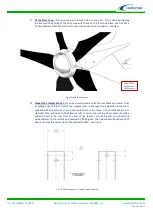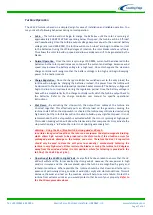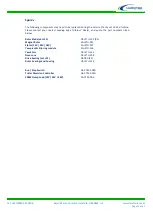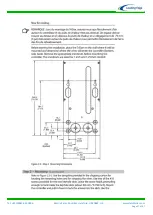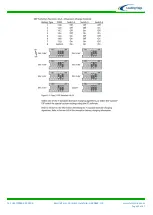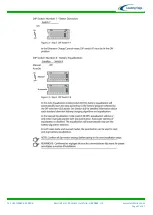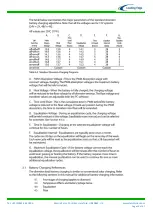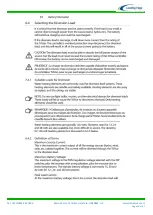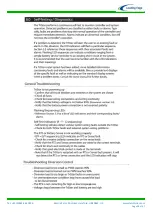
Tel: +44 (0)845 652 0396
Skyrrid Farm, Pontrilas, Hereford. HR2 0BW. UK
www.leturbines.com
Page 24 of 47
Introduction
Please read this manual and the specific manual for the Tristar Charge Controller before attempting
to assemble, install or operate your Tristar Charge Controller. This will assure optimum
performance and safety.
The Tristar Charge Controller and Dump Load is a 3
rd
party solution designed to prevent 12, 24 or
48V batteries from overcharging.
The Tristar Charge Controller and dump load operates like an electrical overflow for your batteries.
As the turbine charges the batteries, the State of Charge (SOC) and battery voltage will rise. As the
batteries become fully charged and are no longer able to accept any further electrical energy, the
battery voltage will rise. At this point, the Tristar controller begins to bleed power into the dump
load. This energy is then dissipated as heat into the surrounding environment. More or less power
is diverted to the dump load according to how much is being supplied to the battery from the
turbine.
Safety Precautions
Safety must always be your primary concern during the assembly, installation and operation of your
turbine and charge controller. Always be aware of the risks involved with mechanical and electrical
installation work. If in doubt about any issue regarding your turbine system, please seek further
assistance before proceeding.
Mechanical Safety Hazards:
Whilst installing the charge controller or when performing routine inspection or maintenance,
always stop the turbine by activating the stop switch.
Electrical Safety Hazards:
The Tristar controller and dump load operates with low voltage DC. Even at these low voltages
there are inherent risks. Caution should always be used when connecting a turbine or charge
controller to the electrical system.
Location – The Tristar controller and dump load should be mounted in an adequately ventilated
area, which is not exposed to direct moisture or spray. The dump load elements become hot during
normal operation and should not be covered or blocked.
The Dump load should not be mounted on a flammable surface due to the high temperatures that
can be achieved by the dump load.
Ensure that you have followed the cable-sizing guidelines to ensure that the correct size of cable
has been selected. If a cable of insufficient cross-sectional area is used at any point in the electrical
system, heat will build up in the cables causing a potential fire hazard. A properly-sized fuse or
circuit breaker should be used in the cables connected to the battery. This will stop the risk of short
circuit currents.
Batteries used in renewable energy systems can deliver a serious amount of current. A short circuit
in the battery circuit can lead to hundreds of Amps flowing through the battery cables. This will
cause a heat build-up and ultimately an electrical fire. Batteries are also susceptible to explode
when shorted. Always use insulated electrical tools when working on the battery’s electrical
connections.
Batteries are very heavy. Do not attempt to move batteries by yourself. Always use manual
handling tools and an assistant.
Summary of Contents for GA-LETU-016
Page 47: ......


